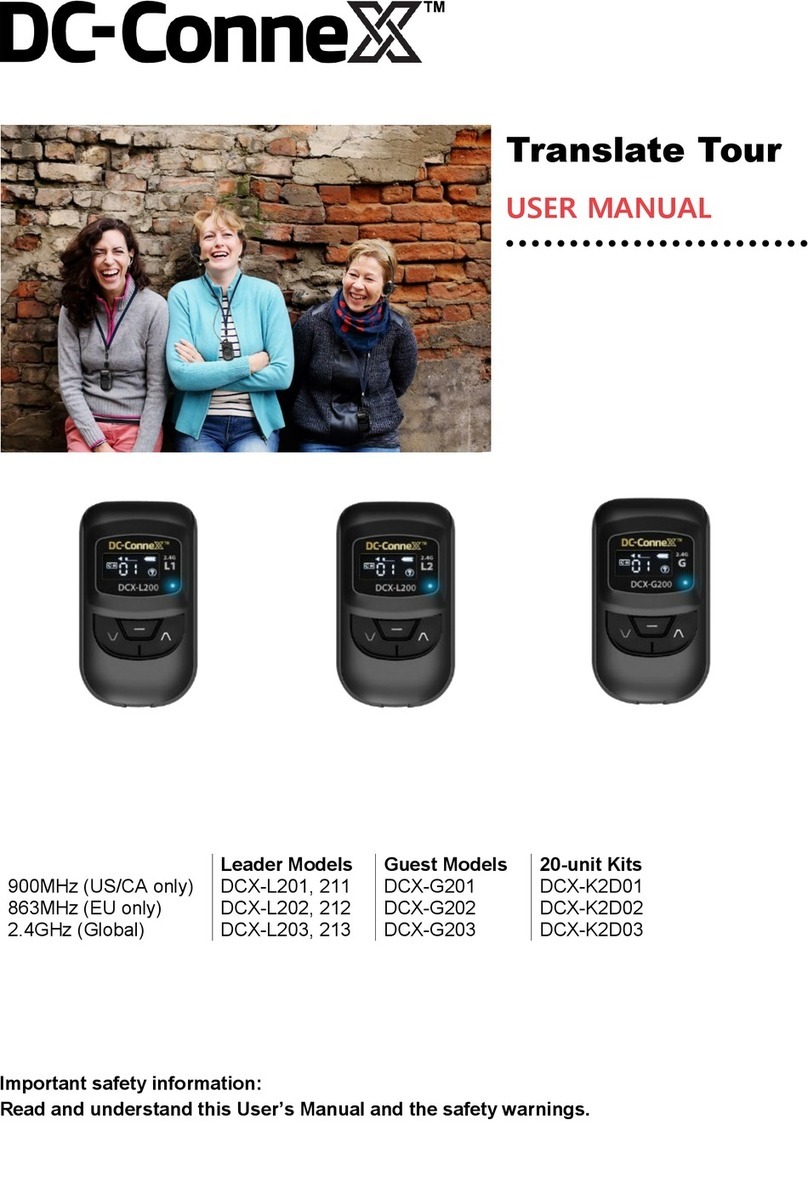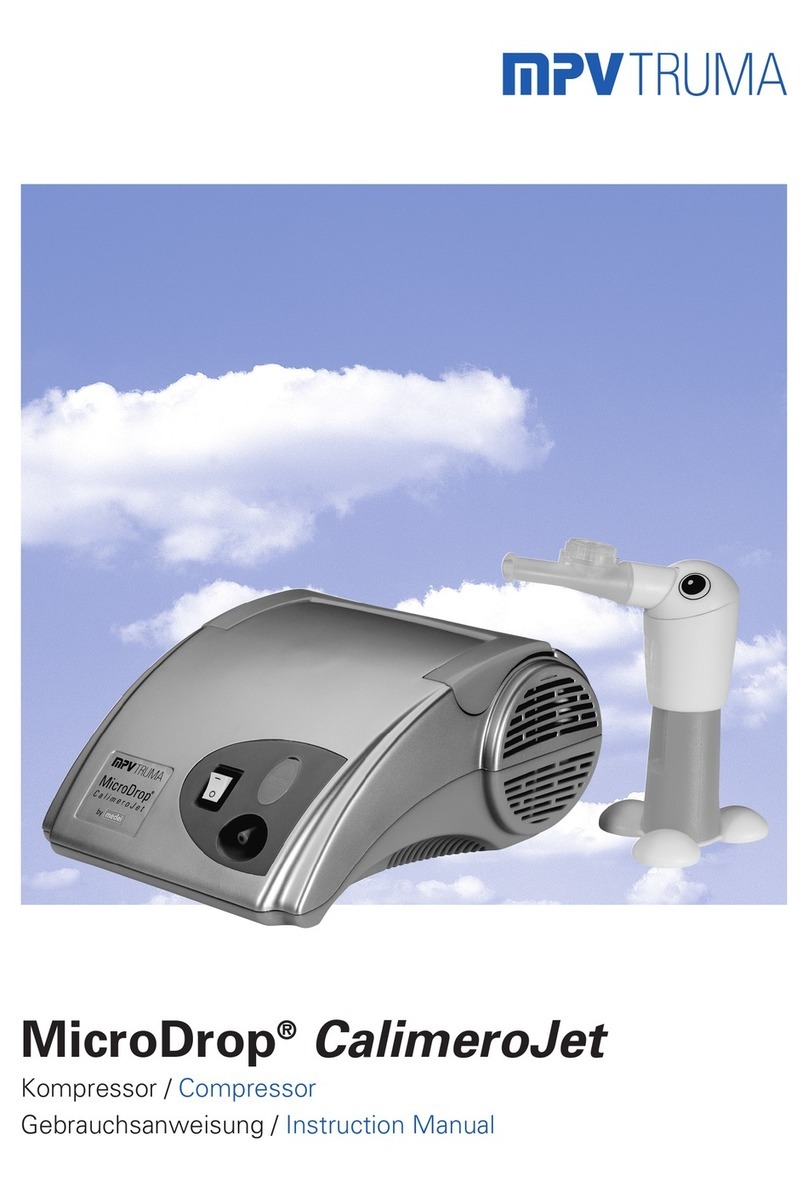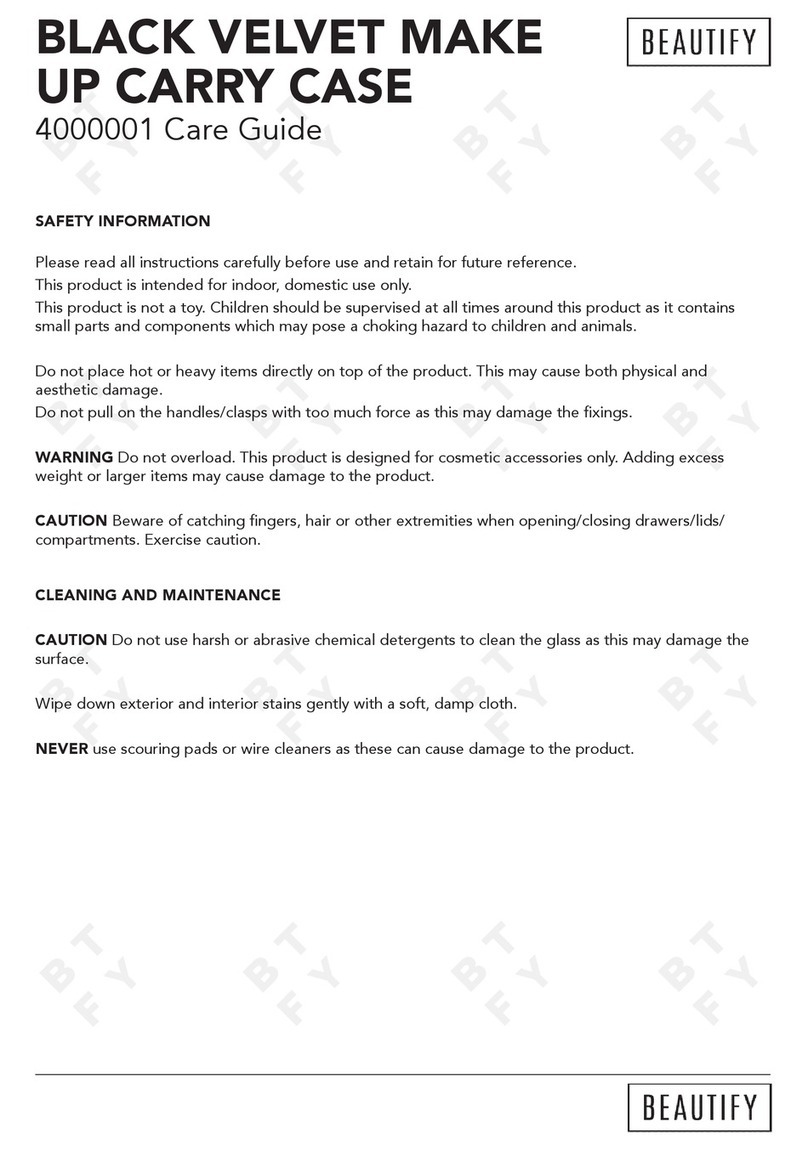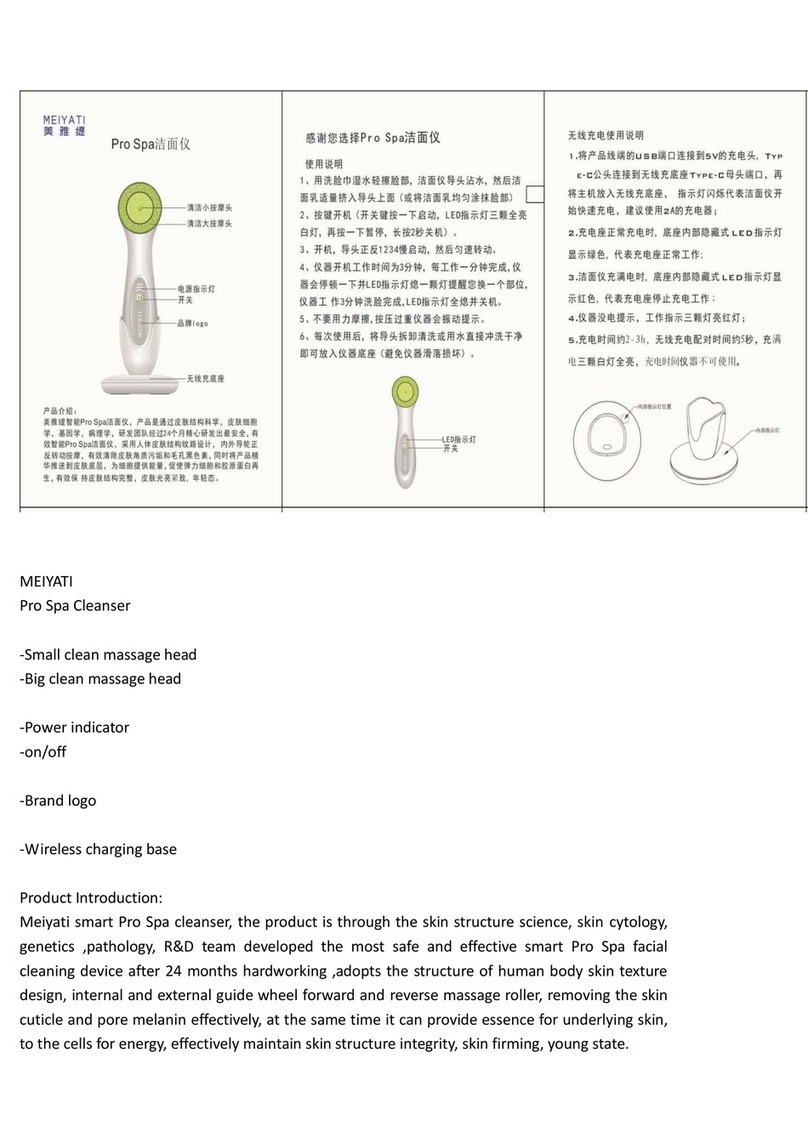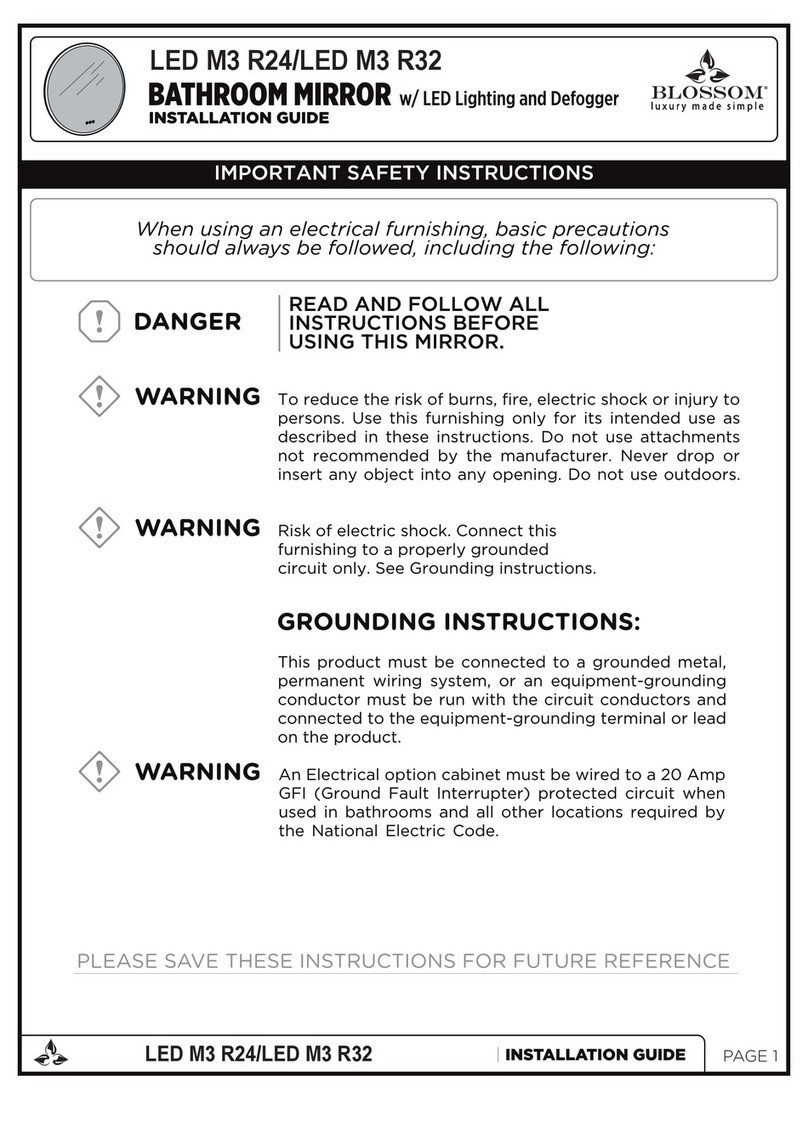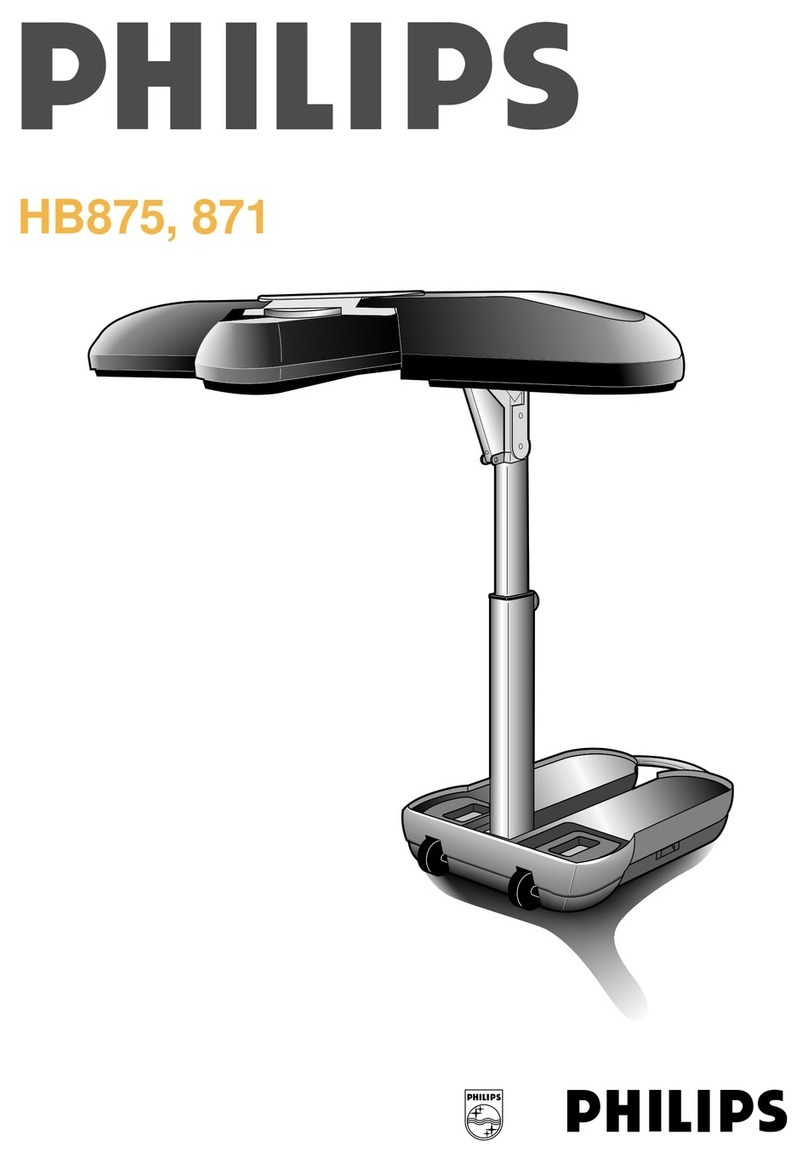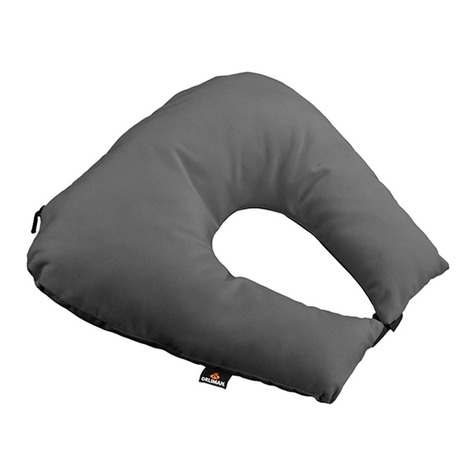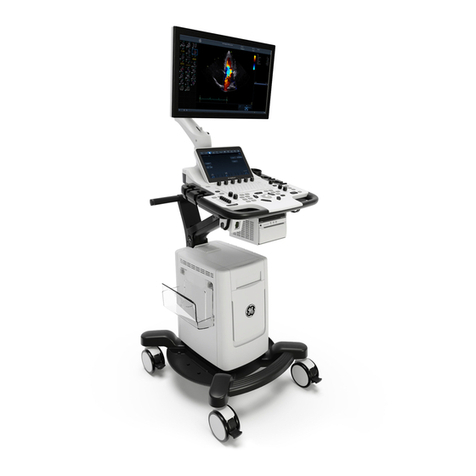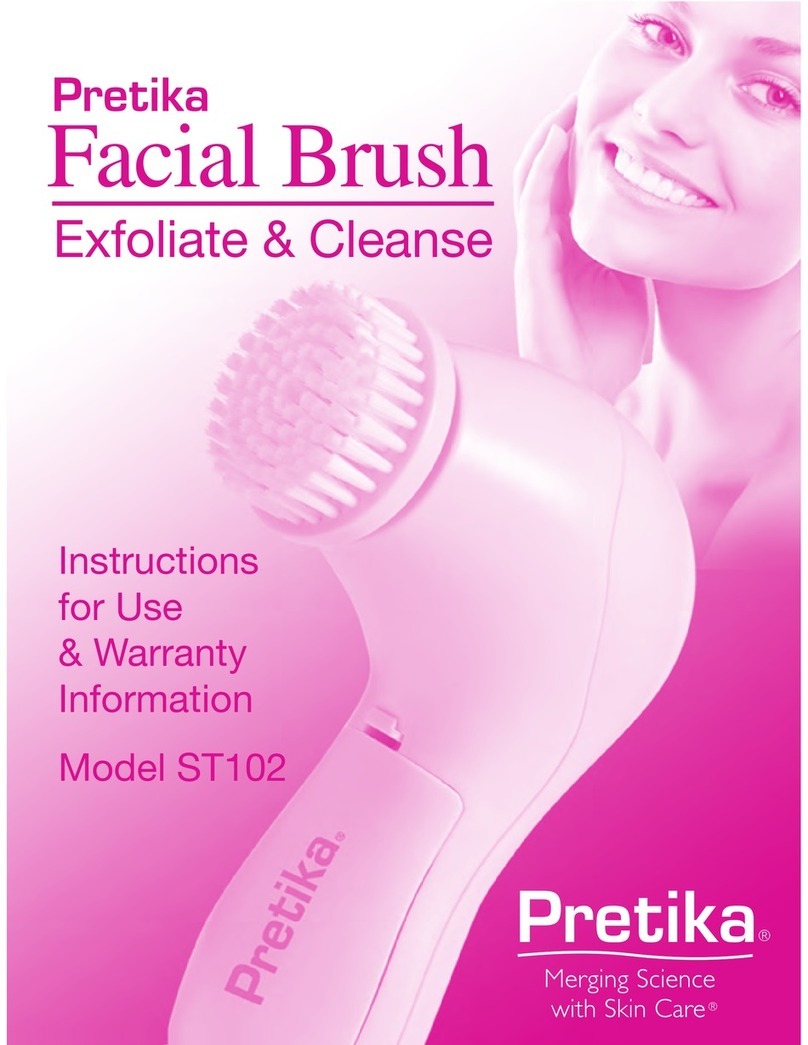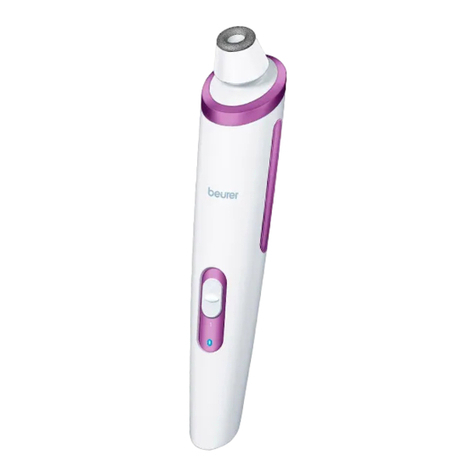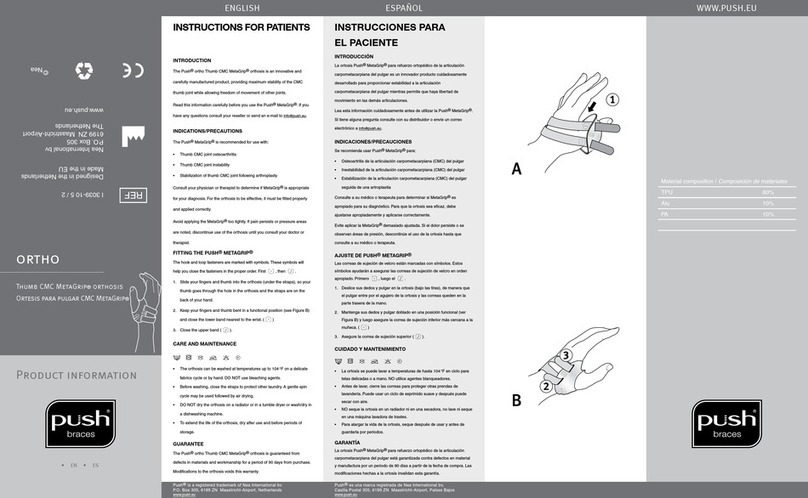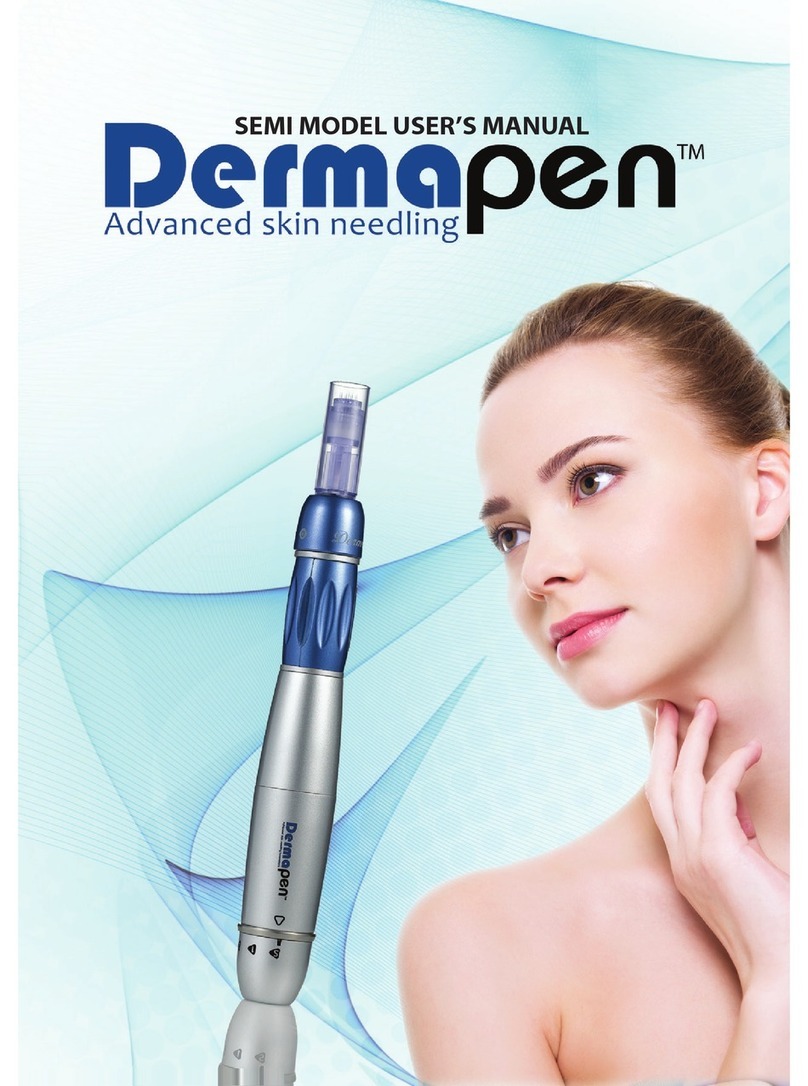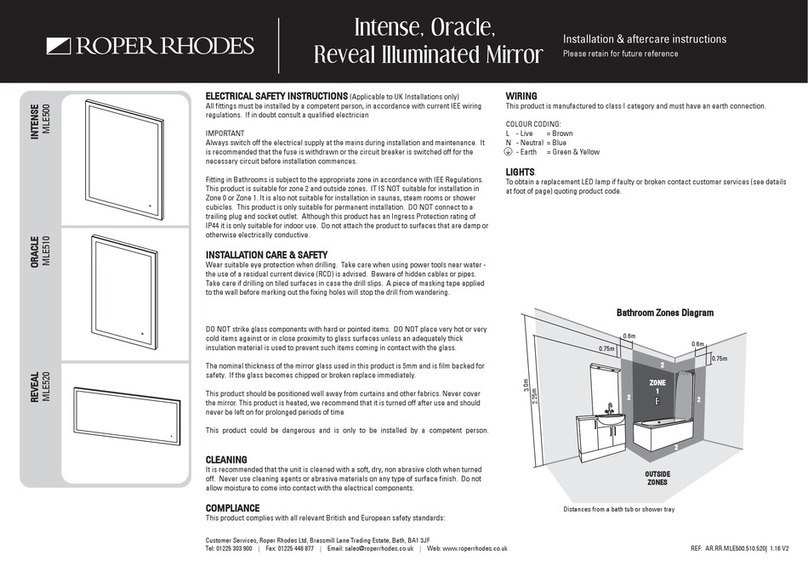Spectrum Healthcare ErgoKneeler Instruction Manual

Information, Instructions and Guidelines for Use
IMPORTANT - Please read carefully and use product accordingly. Retain document for future reference
The ErgoKneeler™….. a dynamic kneeling system that can provide comfort, support and ease
of movement across a range of low working positions for people who undertake tasks at a low height
About the ErgoKneeler™
The ErgoKneeler™is a uniquely profiled kneeling pad and stool integrated into a single piece of equipment. The
ergonomic design alleviates the compression forces and postural discomfort associated with kneeling or squatting and
promotes good spinal posture. To facilitate optimum posture and comfort for the individual, the position of the stool is
adjustable.
Introducing a new dynamic approach to low height working, the ErgoKneeler™reduces the need for prolonged static
postures by enabling the user free movement across a range of functional and balanced low working positions whilst
carrying out a task. Frequent movement and changes to position throughout the duration of a task helps alleviate the
damaging musculoskeletal stresses and pressures that can result from static kneeling or squatting.
Moulded in sealed polyurethane foam, the ErgoKneeler™has smooth lines and is easy to clean. To promote infection
prevention an active antimicrobial additive is incorporated throughout the foam and within the product’s tough lacquer
coating. The specialist areas providing slip resistance on the underside are also antimicrobial.
Used in accordance with the ErgoKneeler™ ‘Information and Guidelines for Use’, the ErgoKneeler™aims to
promote the comfort and musculoskeletal health of nurses, midwives, podiatrists, therapists, educational staff, care staff
or anyone who undertakes tasks at a low height.
The ErgoKneeler™ is designed, developed and manufactured entirely in the United Kingdom

Why low working can be a problem
It has long been recognised that low working postures such as kneeling and squatting are very uncomfortable and
potentially damaging. The longer such positions are sustained and the more frequently they are adopted, then the greater
the risk of resulting injury and cumulative damage. Research now shows that regular, prolonged static kneeling or
squatting increases the risk of developing osteoarthritis of the knees at an earlier age.
For further information, please visit www.ergokneeler.co.uk
Where possible, low height working should be avoided but sometimes it may be the only way that certain tasks can be
carried out. For many people in many differing industries, repetitive and prolonged low working postures are an inherent
aspect of their daily work.
How the ErgoKneeler™can help
The ErgoKneeler™provides an option for managing the musculoskeletal stresses and discomfort arising from
unavoidable low height working providing its use is ergonomically assessed as suitable for task and user.
The ergonomic design:
supports the knees and ankles away from their end of range position, reducing stress
on muscles and joint structures. The support to ankles also frees the feet to move
during kneeling, promoting circulation.
supports body weight, relieving the compression forces on the joints and tissues in the
lower limbs.
cushions the knees against the hard floor. The long mats provide protection and a
clean kneeling surface for the entire length of the lower legs.
positions the pelvis to promote natural spinal curves, reducing both static muscle
tension and the stressing of spinal structures. To achieve optimum spinal posture, the
task should be undertaken at around the waist height of the user. For example, when
undertaking health/care procedures to a lower limb, a limb support such as the
ErgoRaiser™ can position the patient/client’s leg at an appropriate height. For
information about the ErgoRaiser™ see www.spectrumhealthcare.co.uk/seating/
facilitates positioning of the task close to user, reducing the need to stoop or over reach.
enables movement between full kneeling, half kneeling (alternating sides) and sitting, the user being able to maintain
a secure, balanced low working position throughout the task. Frequent changes of position helps maintain flexibility of
soft tissues, promotes circulation and reduces the build-up of pressure through the knees that can result from
prolonged static kneeling.
Range of Positions
Half kneeling
Full kneeling (alternating sides) Sitting
High kneeling High half kneeling Pivot from hips
The user can also move freely into high kneeling or high half kneeling, enabling a very effective and practical range of
reach. If occasionally reaching to a lower level or the floor, better spinal curves may be maintained by pivoting forwards
from the hips. Please note: work carried out at very low or floor level will increase pressure and stressing through the
knees and should be of short duration only.

Rising
In order to stand, move into high kneeling and bring one foot forwards to assume high half kneeling
before pushing up into standing. Rising may be assisted by placing hands on the forward knee and
pushing down as you stand.
Preparation for Use
IMPORTANT –Please note! The ways in which people move, the positions they can adopt and levels of flexibility vary
according to the capabilities of the individual. Prior to use, it is essential that ergonomic assessment is undertaken to
ensure suitability of the ErgoKneeler™for that individual. The individual must:
be fit to move and handle the ErgoKneeler™and able to follow good handling practice and techniques.
be able to easily and safely lower onto and rise from the ErgoKneeler™.
be able to easily and comfortably adopt and move between the different positions on the ErgoKneeler™.
have information, knowledge and understanding of the correct use of the ErgoKneeler™and follow the
ErgoKneeler™‘Information and Guidelines for Use’.
be able to assess and organise the task to allow for changes to their position and enable close as possible working.
Should an individual experience discomfort whilst using the ErgoKneeler™they should immediately discontinue
use. Employees should then report back to their employer
Lowering onto, positioning and rising from the ErgoKneeler™
How an individual can most safely lower onto or rise from the ErgoKneeler™should form part of the assessment for that
individual; the following methods are intended as generic guidance only. Please note: particular care should always be
taken when using on wet floors.
Positioning
To ensure security of position, take care that knees are comfortably within the profiled edges of the
kneeling mats and ankles are resting comfortably over the ankle supports, allowing feet to relax.
With weight off the seat, use the stool handle to slide the stool backwards or forwards until a
comfortable sitting position with an upright pelvis and natural spinal curves is achieved.
DO NOT remain in full kneeling for more than a few minutes. Move into half kneeling and no matter
how comfortable you may feel, continue to change position frequently throughout the duration of the
task thereby limiting the amount of time that pressure is taken through either knee.
(See below –Avoid prolonged static kneeling)
Lowering –method 1
Stand within the open horseshoe area of the kneeling mats facing away from the stool. Slowly
lower one knee onto the kneeling mat on that side, assuming a half kneeling position. Lowering
may be controlled by placing hands on the forward knee. Once safely in half kneeling, flex the
second knee and position similarly on the other side.
Lowering –method 2
Stand behind the ErgoKneeler™facing forwards. Bend knees sufficiently to place hands on top of
the stool seat for support and carefully pivot forwards to lower knees directly onto kneeling mats.
Avoid prolonged static kneeling
IMPORTANT - Please Note! Prolonged static kneeling increases the risk of injury and cumulative damage, particularly to
the knees. Frequent movement and change of position throughout a low working task helps alleviate the pressures and
stresses that can cause injury and damage.
The ErgoKneeler™ is specifically designed to enable easy and frequent change of position between full kneeling,
half kneeling (alternating sides) and sitting during unavoidable low working. It must be used accordingly and
MUST NOT be used to prolong static kneeling.

Load Capacity, Handling and Storage
User Load Capacity –18stones (115kg)
Approximate weight 4kg - within the HSE “Guideline Weights for Lifting and Lowering”
providing that good manual handling principles are followed. Users are advised to follow
their organisation’s Moving and Handling Policy, Training and Procedures when handling
the ErgoKneeler™.
The ErgoKneeler™is in its most ergonomic lifting and handling position when tipped
onto its back. The handle then assumes a vertical position enabling the lift to be from
mid-calf level rather than the floor. The ErgoKneeler™MUST ALWAYS be lifted by
the handle, NOT by the stool or kneeling mats as this may cause damage to their
structure.
To minimise moving and handling, store the ErgoKneeler™as close as reasonably
practicable to the area of use. Community Health Trusts may find it more practical to
issue an ErgoKneeler™to the home of a client for the duration of the treatment period
as this will minimise the manual handling requirement for staff.
As with all other low height equipment, due care must be taken when positioning the ErgoKneeler™in order to avoid
trip/slip hazards.
The foam kneeling mats of the ErgoKneeler™MUST NOT be folded as this may cause damage to their
structure. Due care must be taken in storage and during transportation.
Infection Prevention, Cleaning and Maintenance
Infection Prevention: As part of the moulding process, TETRAMASS PLUS Antimicrobial Additive is
incorporated throughout the entire foam of the ErgoKneeler™and within the product’s tough lacquer coating. For
further information about TETRAMASS PLUS Antimicrobial Additive please visit www.tetramass.co.uk/tetramass-
plus/
Recommended Cleaning:Regular warm soap and water wash and dry with clean cloth/
paper towel. Tolerant of 1% bleach solution. The ErgoKneeler™must not be left immersed in
water/fluids nor left sitting in wet/fluid conditions. In situations where washing is not practical,
specialist TETRAMASS PLUS Antimicrobial Wipes are available from Tetramass Ltd, 01604
781880, email info@tetramass.co.uk
Maintenance: For thorough cleaning, the stool and mat can be easily separated by releasing
the bolts within the slide system; please note the position of the nylon sleeves. Care must be
taken during re-assembly to ensure the nylon sleeves are correctly in place. The bolts should
be fully tightened (do not force) and then released sufficiently to allow the slide system to
operate smoothly.
The ErgoKneeler™should be regularly inspected to ensure security of the bolts, free movement of the slide system
and that there is no structural damage.
Spectrum Healthcare (UK) Ltd is grateful to the Yorkshire Back Exchange specialist Manual
Handling and Back Care professionals who kindly reviewed the content of these Guidelines
For further information please contact Spectrum Healthcare (UK) Ltd at:
Tel: 01793 762928 email: sales@spectrumhealthcare.co.uk website: www.spectrumhealthcare.co.uk
The ErgoKneeler™ is a European Community Registered Design. No 001615311-0001
© Linda J Darwent 2011. All rights reserved
Table of contents
Other Spectrum Healthcare Personal Care Product manuals

